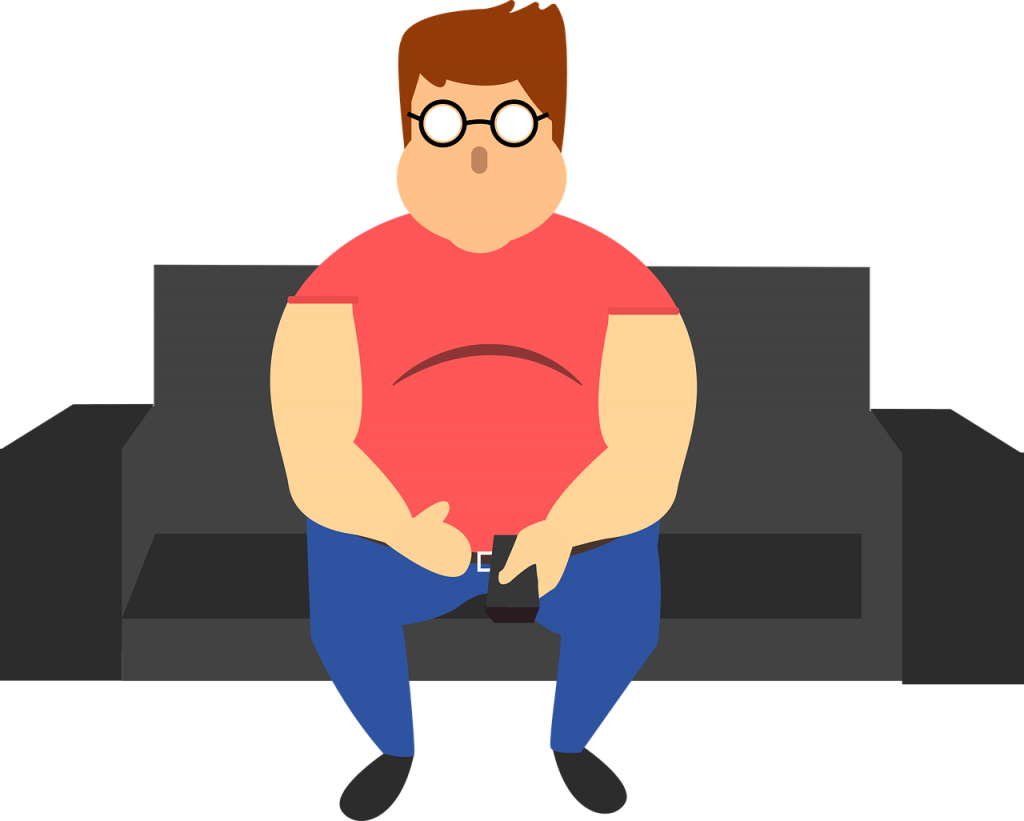
That feeling hit me like a brick. That feeling I get when I’m asked to help a patient in the emergency department for constant unrelenting back pain and do a proper chart review only to find words like obesity, drug seeking behavior, chronic pain, moderate to severe central canal stenosis with neurogenic claudication, weakness, and neurosurgery consult. Yes, that feeling. I got hit with that brick recently. To top it off there was a cultural barrier and the patient was young, unemployed, already had steroid treatments, and was previously seen by a physical therapist well versed in pain education. I felt hopeless to help this individual before I even walked into the room. I gathered my thoughts, suppressed my biases, and decided to go in with an open mind and listen to what the patient had to say.
Wait. Before I walk into the room, I must rewind about a week. There were a couple of days where myself and my three boys were together. We are an active family typically and try to limit screen time but for these couple days the weather was bad, the boys were exhausted from their last week at school, and we needed to rest up in preparation for a summer vacation. With my wife at work I decided it was ok to binge on video games for a couple of days. It was awesome! That is until the day after. I was at work and developed excruciating ankle and calf pain in the same location where I had fractured my leg a couple of times. Of course, I thought things like infection and inflammation, but I also have a disc herniation in the lumbar spine and realized this pain was most likely the result of sitting around for extensive periods of time. That night I spent an hour laying prone and then went to the gym the next day. I did cardio, deadlifts, squats and all the things that would not typically be prescribed but I knew I had to load my back to get the swelling out and restore symmetry to my discs. It worked well. My back pain and leg pain went away. Upon reflection of this experience I felt frustrated but then wondered if I was being prepared to see someone with radicular pain in the near future,
I walked into the patient’s room to see an intimidating, large, somewhat emotionally charged, man about 40 years old, and his mother. I introduced myself and sat down. To protect myself from the rejection I thought for sure would be coming my way, I explained to the patient that I had done a thorough chart review, looked at his MRI, and am well aware of the disc bulge with moderate to severe central canal stenosis. I said to him I may not be able to fix his situation but that I have a couple of ideas that may help if he was open to hearing them.Surprisingly the patient wanted to hear what I had to say. I started out by asking him to tell me his story and what brought him to the emergency department today.
The patient stated that he needed something done for his back and leg pain now. He had missed his physical medicine and rehab appointment.His neurosurgery appointment wasn’t for another six months and he did not have any medications to help with the pain. The patient stated (and this was verified in my chart review) that he had been doing all the stretches several times a day and had been trying to lose weight but just couldn’t. The patient said he can’t stand or walk more than 10 minutes without needing to sit down due to the lumbar and calf pain. The patient stopped working a few years ago and has become increasingly sedentary over this past winter. He reminisced for a while on how unfair life is.
“I was an athlete,” he said, “I beat up my body just like the pros but if I was a pro athlete I would have been given as much pain medication as I needed and had surgery a long time ago.” The patient also said, “The doctors say I hurt because I’m fat.” He went on to report he lost 80 pounds this past year (still 240) but that he hurts now more than ever. The patient stated he felt better when he was fat but still going to the gym, walking the treadmill, and doing what he wanted. How am I supposed to lose weight when I can’t even walk, he asked me. He reported unrelenting bilateral calf pain but the right side more than the left. The patient reported a 20+ year history of back pain but never had pain in the calves until more recently. He said walking up a hill was a struggle because he had the feeling he would go backward.
Previous emergency doctor and therapist notes from about four months prior noted weakness with dorsiflexion and plantarflexion along with diminished reflexes hence the MRI order and subsequent neurosurgery consultation. Neurosurgery at that time recommended steroids and physical medicine and rehab consult before considering surgery. The patient stated that steroids did not help. He reported feeling vulnerable like he had to hide the pain because nobody would believe him. He stated that he could no longer hold his own in a fight. “The other day I was trying to punch somebody, and they just pushed me over,” he said. I did not pry too much about that situation but told him that if he had stenosis then his back may get more easily irritated with a fall like that.
At this point I started my exam. There was no weakness in dorsiflexion or plantarflexion as noted prior. Mild sensory loss L-4, L-5 dermatomes distally. Straight leg raise test positive for calf pain at about 45 degrees on the right and 60 degrees on the left.Right calf with mild tenderness when squeezing. No bowel or bladder changes. No saddle paranesthesia reported. Gait a little slow but not antalgic. No ataxia or unsteadiness. No foot drop noted with ambulation even after standing for a bit. It seemed to me that even though the patient was reporting more pain, there was some neurologic improvement from the previous exams I had read in the chart.
Instead of repeating the same pain science education he has already heard I decided to tackle his fears head on. I pulled up the patient’s MRI on a computer screen and showed him where he had the disc bulge and explained that there was still room for the spinal cord. I informed him of research demonstrating that 87% of people between 20 and 70 have disc bulges and that sometimes they hurt and sometimes they don’t. I asked him if he had ever tried laying prone. The patient said that he was afraid to try that because it would hurt. I countered with the concept of centralization of pain.I asked him where he thinks the disc fluid was being pushed with prolonged sitting. He replied toward the spinal cord. I asked him what he thought would happen to the fluid in his discs if he laid on his stomach or bent backward. He replied away from the spinal cord. The patient then laid prone on elbows for 10 minutes while we talked about his situation.
I relayed to him that I had just recently had the same pain in my calf. He was interested in this. I also asked him if he thought I was fat. He looked at me a little puzzled by the question. I asked again, “Do I look like I am fat?” He replied no. I told him he was right. I have hardly any fat and I am in good physical condition. How then, can I have this pain and not be fat while the doctors are telling you that you have this pain because you are fat? Silence.
While he continued to lay there, he reported that his calf pain had eased off and the soreness was mainly in his back. He began to trust me. I decided to take a risk and get to what I thought was the crux of the situation. I first informed him that pain does not discriminate. It strikes people of all shapes, color, and background. I reminded him that his pain had worsened when he stopped working, stopped exercising, started sitting around. I informed him that his disc bulge is probably not new since there is no reported onset or trauma any time in the past couple of years, rather something else was happening to increase the sensitivity. I felt he would benefit from returning to outpatient PT and giving a true effort at strengthening. I told him that he may or may not need surgery in the future but that his body is not fragile and hurt does not always equal harm. The worst-case scenario is he gets really strong before surgery and then has a better chance at recovery, but best-case scenario is that he may not need surgery at all since there is already some improvements in my exam today from prior exams. He was listening now and so was his mother.
We finished by doing some prone anterior/posterior lumbar mobilizations, prone press ups, and standing extensions. I gave him a hand out with an extension bias exercise program to start with. Finally, I told him that he was going to be ok, but he needed to find employment, start loading his body, and that he was alive for a reason. The patient had been standing for quite a while at this point without complaint of calf pain. He was smiling, his mother smiling, we shook hands and parted ways.

––– Comments
Penny
Commented • January 8, 2021
Thank you for sharing this story. There are no coincidences and you were in tune enough to know this and use your experience to help another. Kudos
Melanie Truett
Commented • July 7, 2020
All I can say is “Thank you for caring!”. Promoting mutual trust between therapist and patient can be vital when treating patients with more complex or emotional issues.